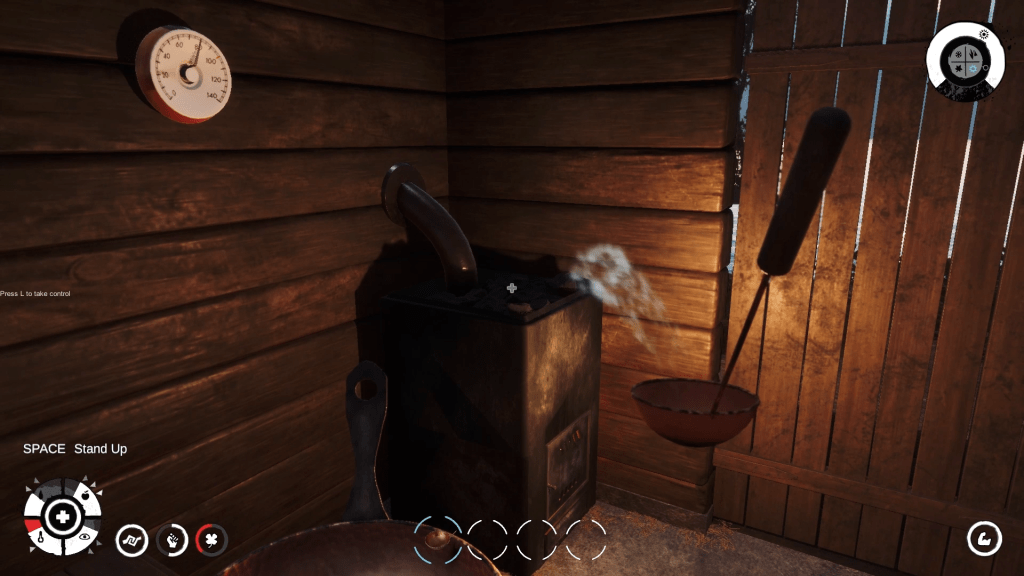Want to add some color to your tabletop role-playing games? Here’s a quick method to roll up a random tavern, complete with name, atmosphere, staff, and even the potential for some side stories to shake up your ongoing plot.
First, to name your tavern, roll a d20 twice to get two numbers between 1 and 20. Apply the following adjustment for the quality of the establishment to each number to get two final results between -2 and 23.
| Quality | Adjustment |
| Squalid | -3 |
| Poor | -2 |
| Common | -1 |
| Average | 0 |
| Nice | +1 |
| Fine | +2 |
| Exquisite | +3 |
Find the result of your two rolls on the table below. You can either name your tavern “The Adjective Noun” or “The Noun and Noun.”
Let’s say you’re making a poor tavern and you roll a 9 and a 2. You subtract 2 from the results to get 7 and 0. That gives you The Grim Snake, The Dead Sailor, or The Snake and Sailor (or Sailor and Snake), whichever one sounds best for your setting. If you’re making a fine tavern and you roll a 6 and a 15, those become 8 and 17, giving you The Lost Hero, The Cheerful Hare, or The Hare and Hero / Hero and Hare. (Of course, reroll or adjust if you’re not happy with any of the results.)
| Roll | Adjective | Noun |
| -2 | Hanged | Rat |
| -1 | Drowned | Thief |
| 0 | Dead | Snake |
| 1 | Drunk | Outlaw |
| 2 | Dizzy | Badger |
| 3 | Tipsy | Shepherd |
| 4 | Lazy | Dog |
| 5 | Thirsty | Drover |
| 6 | Hungry | Cat |
| 7 | Grim | Sailor |
| 8 | Lost | Hare |
| 9 | Lonely | Tailor |
| 10 | Wandering | Lamb |
| 11 | Quiet | Rider |
| 12 | Stout | Bull |
| 13 | Drowsy | Knight |
| 14 | Merry | Deer |
| 15 | Lucky | Curate |
| 16 | Cozy | Stag |
| 17 | Cheerful | Hero |
| 18 | Dancing | Lion |
| 19 | Winsome | Prince / Princess |
| 20 | Flying | Peacock |
| 21 | Blessed | Sovereign |
| 22 | Glorious | Unicorn |
| 23 | Regal | Dragon |
Now that you have a name, the next thing to do is roll up the atmosphere and staff. For this roll a d6 and apply the same adjustments for quality.
| Roll | Atmosphere and staff |
| -2 | A rickety old hovel, half falling down, with rotten floorboards and vermin scuttling just out of sight. The staff is surly and suspicious of outsiders. |
| -1 | A dilapidated shanty with broken windows. The wind whistles through chinks in the walls and rain soaks through the uneven thatch of the roof. The staff is gloomy and unhelpful. |
| 0 | A ramshackle place knocked together from an old barn and its outbuildings. The staff is tired and rude. |
| 1 | A worn-out house that’s seen better days; the furniture is unsteady, and the curtains are faded. The staff is harried and disagreeable; they respond to the needs of their guests, but slowly and with lots of grumbling. |
| 2 | A modest establishment with good ale and decent food, but the furnishings are old and threadbare, the beds are uncomfortable, and the walls are thin. The staff is capable but does not take initiative and is hard to get moving. |
| 3 | An old but tidy farmhouse adapted to hosting travelers; everything inside is worn but well cared for. The staff is polite and proud of their inn, but they have limited resources to work with. |
| 4 | A plain but cozy little inn; most of the guests are regulars from the local countryside who come here to see old friends and enjoy familiar comforts after a hard day’s work. The staff is cheerful and helpful, but often distracted by conversations with regulars. |
| 5 | A comfortable and well-kept place; the furnishings are new and pleasant, but not expensive. The staff is proud of their tavern; they are gracious to guests who appear well-to-do, but brusque with any visitors who seem poor or unkempt. |
| 6 | A charming old-fashioned tavern that has been run by the same family for generations; many of the furnishings are heirlooms passed down from the original owners. The staff knows the full history of the inn and will share interesting historical tidbits at the drop of a hat, but doesn’t know much else. |
| 7 | A new establishment, recently built with all the modern conveniences, comfortable rooms, and excellent food. The staff is eager to advertise and encourages guests to spread the word. |
| 8 | A luxurious retreat, built in the style of distant lands and filled with imported luxuries; exotic spices flavor the food and vintage wines fill the cellars. The staff performs elaborate courtesies with an affected air, but are also expert at discreetly fulfilling guests’ wishes, even the more unusual ones. |
| 9 | A palatial lodging built with cut and polished stone, gilded everywhere; the furnishings are immaculate antiques, and the serving wares are the finest porcelain and silver. The staff is highly competent, discreet and unflappable, accustomed to both accommodating the whims of wealthy clients and being handsomely rewarded for their service. |
If you want to add a little extra drama to your characters’ stay at the tavern, you can also roll up a little side story with a d6, applying the same modifier for the quality of the place. How your players deal with this added drama is up to them.
| Roll | Drama |
| -2 | A gang of brigands is dividing up the loot from their latest raid in a corner of the common room. They suspect the player characters may be hunting them, so they try to look innocent, which only makes them look more suspicious. They are likely to react with violence if challenged. |
| -1 | A young traveler spots the player characters and thinks they recognize the person who killed their parents and against whom they swore vengeance. (They may or may not be correct, depending on your party’s backstories and adventuring habits.) |
| 0 | The kitchen catches fire in a cooking accident, and the guests are called upon to help evacuate the inn and fight the blaze. |
| 1 | A very large, very drunk patron spills their drink on one of the player characters and gets belligerent demanding the character buy them a new drink. |
| 2 | The innkeeper accuses the player characters of trying to pay with counterfeit coins. Depending on the setting, local law enforcement may or may not get involved before everything can be sorted out. |
| 3 | A smuggler, on the run from the law, attempts to slip some of their contraband into the player characters’ baggage. |
| 4 | A spy in the service of the player characters’ enemies is staying at the same inn. In their haste to get away before the party notices them, they accidentally leave behind some evidence that helps the party on their current quest. |
| 5 | Two young nobles from rival houses are staying at the inn under false names, having run away from their families together. They fear that the player characters may recognize them, so they take steps to evade, eliminate, or ingratiate themselves with the party. |
| 6 | One of the player characters recognizes a familiar taste in the cooking and discovers that someone from their past is working in the kitchen. Whether the reunion is a happy or tense one is up to you and the player. |
| 7 | One of the staff falls into hero worship of one of the player characters and hangs around making starry eyes at them and being generally awkward but harmless. They may be persuaded to do something to help out their newfound hero. |
| 8 | The player characters are mistaken for visiting dignitaries from an important neighboring power and find themselves besieged by petitioners and sycophants. |
| 9 | A wandering prophet recognizes the player characters and offers to share valuable information about their current quest in exchange for picking up the prophet’s rather hefty bar tab. |
Image: Interior of a Tavern, with Cardplayers and a Violin Player, via Wikimedia (currently Royal Collection, UK; c. 1695; oil on canvas; by Jan Steen)
Of Dice and Dragons talks about games and gaming.



















